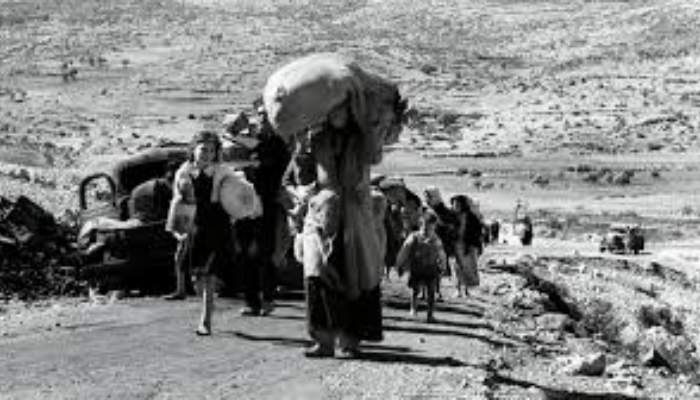
The Israeli-Palestinian conflict has resulted in the loss of tens of thousands of lives and the displacement of millions. Its origins trace back to a colonial decision made over a hundred years ago.
Following an unprecedented assault by the Palestinian armed group Hamas on Saturday, Israel has declared war on the Gaza Strip, drawing intense global attention to what may unfold next.
Hamas fighters have killed over 800 Israelis in coordinated attacks across several towns in southern Israel. In retaliation, Israel has launched an airstrike campaign on the Gaza Strip, resulting in the deaths of more than 500 Palestinians. Israeli forces have also gathered near the Gaza border, indicating potential plans for a ground offensive. On Monday, Israel declared a “total blockade” of Gaza, cutting off food, fuel, and other vital supplies to the already isolated territory—an action that, under international law, is considered a war crime.
However, what happens in the days and weeks ahead is deeply rooted in historical events.
For years, the Israeli-Palestinian conflict has been labeled by Western media, scholars, military analysts, and global leaders as complex, unresolved, and seemingly impossible to solve.
Here's a straightforward guide to help explain one of the world’s most enduring conflicts:

Over a century ago, on November 2, 1917, Arthur Balfour, the British foreign secretary at the time, penned a letter to Lionel Walter Rothschild, a prominent leader of the British Jewish community.
Though only 67 words long, the letter had a profound and lasting impact on Palestine—an impact that continues to resonate to this day.
The letter pledged the British government’s support for “the establishment in Palestine of a national home for the Jewish people” and for aiding “the achievement of this object.” This historic document became known as the Balfour Declaration.
In essence, a European power gave its assurance to the Zionist movement to create a homeland in a region where over 90 percent of the population were Palestinian Arab natives.
A British Mandate was established in 1923 and continued until 1948. During this time, the British government oversaw a large influx of Jewish immigrants, many of whom were escaping Nazi persecution in Europe. This period also saw widespread protests and strikes. Palestinians grew increasingly concerned about the shifting demographics of their country and the British appropriation of their lands to be given to Jewish settlers.

Rising tensions ultimately sparked the Arab Revolt, which took place from 1936 to 1939.
In April 1936, the newly established Arab National Committee urged Palestinians to initiate a general strike, refuse to pay taxes, and boycott Jewish goods in protest against British colonial rule and the increasing Jewish immigration.
The six-month strike was harshly suppressed by the British, who initiated widespread arrests and carried out punitive home demolitions, a tactic that Israel still uses against Palestinians today.
The second phase of the revolt started in late 1937, led by the Palestinian peasant resistance movement, which focused its efforts on British forces and colonial rule.
By mid-1939, Britain had deployed 30,000 troops in Palestine. Villages were bombed from the air, curfews were enforced, homes were demolished, and administrative detentions and extrajudicial killings became widespread.
At the same time, the British worked alongside the Jewish settler community to create armed groups, including a British-led "counterinsurgency force" composed of Jewish fighters known as the Special Night Squads.
Within the Yishuv, the pre-state Jewish settler community, arms were covertly smuggled in, and weapons factories were set up to strengthen the Haganah, the Jewish paramilitary group that would later form the foundation of the Israeli army.
During the three years of the revolt, 5,000 Palestinians were killed, 15,000 to 20,000 were injured, and 5,600 were imprisoned.

By 1947, the Jewish population had grown to 33 percent of Palestine, yet they controlled only 6 percent of the land.
The United Nations passed Resolution 181, which proposed the division of Palestine into separate Arab and Jewish states.
The Palestinians rejected the plan because it allocated roughly 55 percent of Palestine to the Jewish state, including much of the fertile coastal area.
At that time, the Palestinians owned 94 percent of historic Palestine and made up 67 percent of its population.
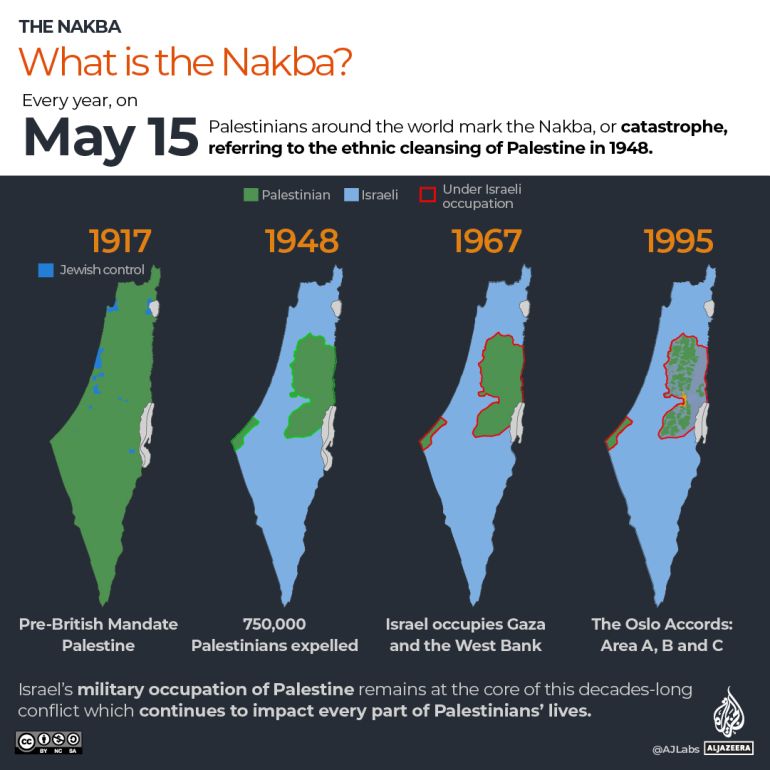
Even before the British Mandate ended on May 14, 1948, Zionist paramilitary groups had already launched a military campaign to demolish Palestinian towns and villages in order to expand the borders of the emerging Zionist state.
In April 1948, over 100 Palestinian men, women, and children were killed in the village of Deir Yassin, located on the outskirts of Jerusalem.
This event set the tone for the remainder of the operation, and between 1947 and 1949, more than 500 Palestinian villages, towns, and cities were destroyed in what Palestinians call the Nakba, meaning "catastrophe" in Arabic.
Approximately 15,000 Palestinians were killed, including in numerous massacres.
The Zionist movement seized 78 percent of historic Palestine, while the remaining 22 percent was split into what are now the occupied West Bank and the blockaded Gaza Strip.
Around 750,000 Palestinians were expelled from their homes.
Today, their descendants reside as six million refugees in 58 overcrowded camps across Palestine and in neighboring countries such as Lebanon, Syria, Jordan, and Egypt.
On May 15, 1948, Israel proclaimed its founding.
The next day, the first Arab-Israeli war erupted, and the fighting ceased in January 1949 following an armistice between Israel and Egypt, Lebanon, Jordan, and Syria.
In December 1948, the UN General Assembly adopted Resolution 194, which affirms the right of return for Palestinian refugees.

At least 150,000 Palestinians stayed in the newly established state of Israel, living under strict military control for nearly 20 years before eventually being granted Israeli citizenship.
Egypt assumed control of the Gaza Strip, while in 1950, Jordan began administering the West Bank.
In 1964, the Palestinian Liberation Organization (PLO) was created, followed by the establishment of the Fatah political party a year later.
The Naksa, also known as the Six-Day War, and the settlement expansion
On June 5, 1967, during the Six-Day War, Israel captured the remaining parts of historic Palestine, including the Gaza Strip, the West Bank, East Jerusalem, the Syrian Golan Heights, and the Egyptian Sinai Peninsula, defeating a coalition of Arab armies.
For many Palestinians, this resulted in a second wave of forced displacement, known as the Naksa, which means "setback" in Arabic.
In December 1967, the Marxist-Leninist Popular Front for the Liberation of Palestine was established. Over the following decade, a series of attacks and plane hijackings carried out by leftist groups brought global attention to the Palestinian cause.
Settlement construction began in the occupied West Bank and Gaza Strip, establishing a two-tier system. Jewish settlers enjoyed all the rights and privileges of Israeli citizens, while Palestinians were subjected to military occupation that discriminated against them and prohibited any political or civic expression.
The first Palestinian Intifada broke out in the Gaza Strip in December 1987, following the deaths of four Palestinians when an Israeli truck crashed into two vans carrying Palestinian workers.
Protests quickly spread to the West Bank, where young Palestinians threw stones at Israeli army tanks and soldiers.
It also resulted in the formation of the Hamas movement, a faction of the Muslim Brotherhood, which engaged in armed resistance against the Israeli occupation.
The Israeli army's brutal response was embodied in the "Break their Bones" policy, proposed by then-Defense Minister Yitzhak Rabin. This included extrajudicial killings, university closures, deportations of activists, and the demolition of homes.
The Intifada was mainly led by young Palestinians and coordinated by the Unified National Leadership of the Uprising, a coalition of Palestinian political groups focused on ending the Israeli occupation and achieving Palestinian independence.
In 1988, the Arab League officially recognized the PLO as the exclusive representative of the Palestinian people.
Popular mobilisations, mass protests, civil disobedience, well-organised strikes and communal cooperatives characterised the Intifada.
According to the Israeli human rights group B’Tselem, Israeli forces killed 1,070 Palestinians during the Intifada, including 237 children. Over 175,000 Palestinians were also arrested.
The Intifada also pushed the international community to seek a resolution to the conflict.

The Intifada concluded with the signing of the Oslo Accords in 1993, leading to the establishment of the Palestinian Authority (PA), an interim government granted limited self-rule in parts of the occupied West Bank and Gaza Strip.
The PLO acknowledged Israel based on a two-state solution and effectively signed agreements that granted Israel control over 60 percent of the West Bank, along with much of the region's land and water resources.
The PA was supposed to make way for the first elected Palestinian government running an independent state in the West Bank and Gaza Strip with its capital in East Jerusalem, but that has never happened.
Critics of the PA see it as a corrupt entity that acts as a subcontractor to the Israeli occupation, working closely with the Israeli military to suppress dissent and political activism against Israel.
In 1995, Israel constructed an electronic fence and concrete wall around the Gaza Strip, severing interactions between the divided Palestinian territories.
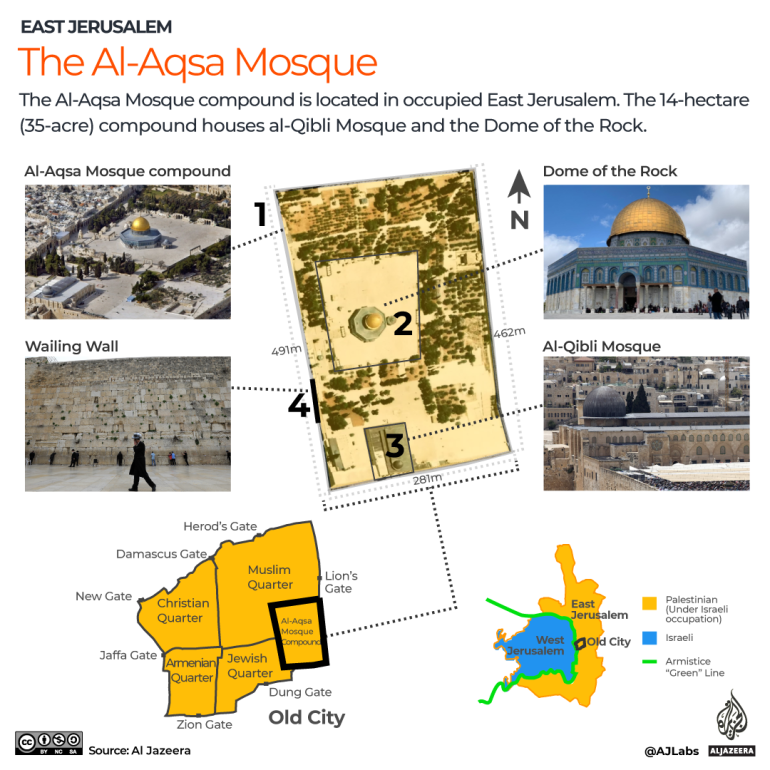
The second Intifada erupted on September 28, 2000, after Ariel Sharon, leader of the Likud opposition, made a controversial visit to the Al-Aqsa Mosque compound, accompanied by thousands of security forces stationed throughout the Old City of Jerusalem.
Violent clashes between Palestinian protesters and Israeli forces resulted in the deaths of five Palestinians and left 200 others injured over the course of two days.
The incident ignited a large-scale armed uprising. Throughout the Intifada, Israel inflicted extensive destruction on the Palestinian economy and infrastructure.
Israel reasserted control over territories administered by the Palestinian Authority and initiated the construction of a separation barrier. Alongside widespread settlement expansion, this severely disrupted Palestinian communities and devastated their means of livelihood.
Although settlements are considered illegal under international law, hundreds of thousands of Jewish settlers have moved into communities constructed on confiscated Palestinian land. Palestinian space continues to diminish as settler-exclusive roads and infrastructure carve through the occupied West Bank, confining Palestinian towns and cities into fragmented enclaves reminiscent of the bantustans created during South Africa's apartheid era.
When the Oslo Accords were signed, a little over 110,000 Jewish settlers resided in the West Bank, including East Jerusalem. Today, that number has grown to over 700,000, occupying more than 100,000 hectares (390 square miles) of land taken from the Palestinians.
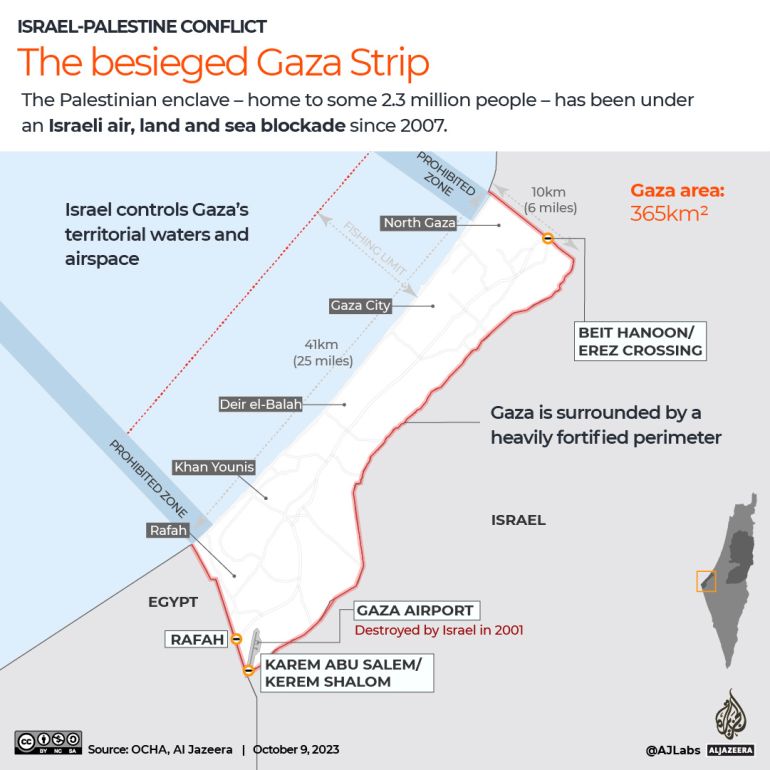
PLO leader Yasser Arafat passed away in 2004. The following year marked the end of the second Intifada, the dismantling of Israeli settlements in the Gaza Strip, and the withdrawal of Israeli troops along with 9,000 settlers from the territory.
One year later, Palestinians participated in their first general election.
Hamas secured a majority in the election. However, a violent conflict erupted between Hamas and Fatah, lasting several months and leading to the deaths of hundreds of Palestinians.
Hamas removed Fatah from power in the Gaza Strip, while Fatah — the leading faction within the Palestinian Authority — reestablished control over parts of the West Bank.
In June 2007, Israel enforced a land, air, and sea blockade on the Gaza Strip, citing Hamas’s involvement in terrorist activities as the reason.
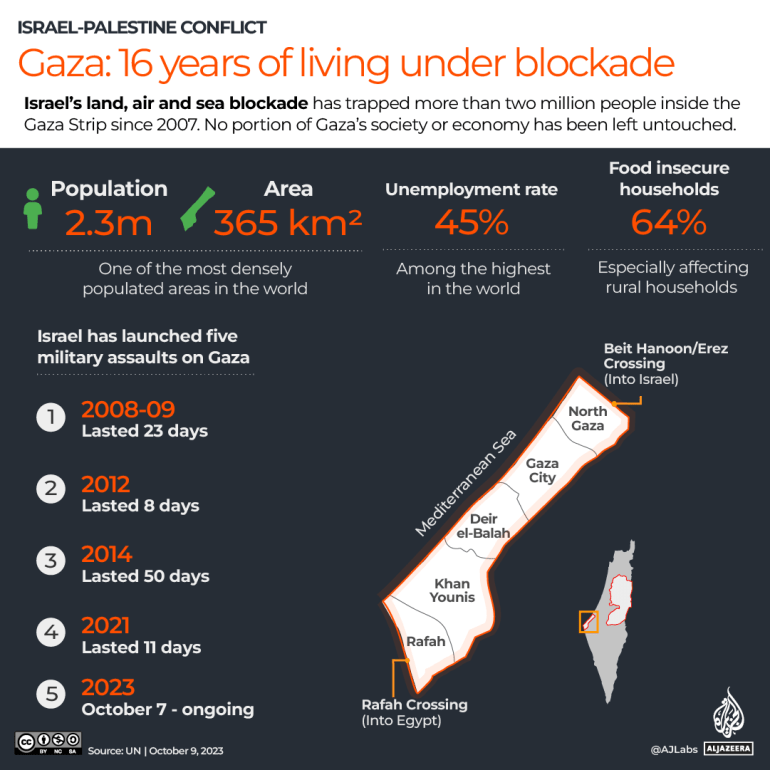
Israel has carried out four extended military operations in Gaza: in 2008, 2012, 2014, and 2021. Thousands of Palestinians, including numerous children, have lost their lives, and tens of thousands of homes, schools, and office buildings have been obliterated.
Rebuilding has been nearly impossible due to the blockade, which restricts the entry of essential construction materials like steel and cement into Gaza.
The 2008 attack included the use of internationally prohibited weapons, such as phosphorus gas.
In 2014, over 50 days, Israel killed more than 2,100 Palestinians, including 1,462 civilians and nearly 500 children.
During the assault, named Operation Protective Edge by Israel, approximately 11,000 Palestinians were injured, 20,000 homes were demolished, and around half a million people were displaced.
